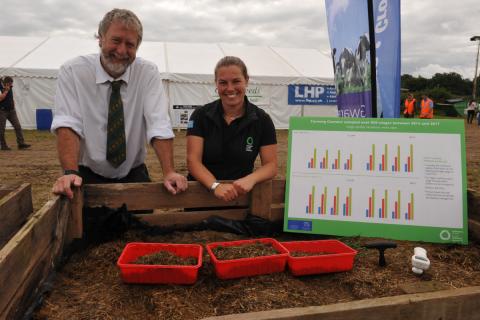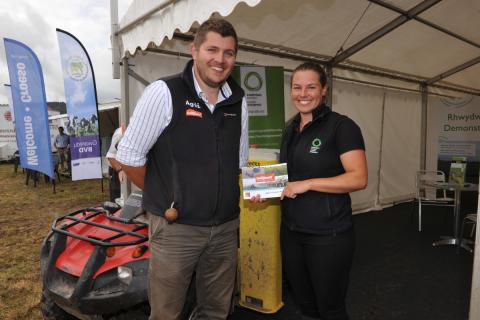Switching from a traditional three-cut silage system to cutting more frequently has lifted forage quality at a Carmarthenshire college farm.
Gelli Aur, a Farming Connect Innovation Site and host of the recent Royal Welsh Muck and Soil Event 2017, is trialling a multi-cut system and also examining the cost difference between harvesting with a precision chop machine and a forage wagon.
Although the full results of the Farming Connect trial won’t be known until after the forage is fed to the herd this winter, the silage quality figures shared with farmers at the Muck and Soil Event are very encouraging, says independent silage consultant Dave Davies of Silage Solutions, who is helping with the project.
Samples taken from silage cut on May 4th – using both systems in different fields and clamping separately – analysed at a crude protein of over 18% and an ME of over 11%. “This is the sort of silage dairy farmers should be making,’’ said Dr Davies.
Good levels of ME have a positive impact on rumen health.
“Because the quality is so much better, more silage and less concentrates are needed in the diet and this improves rumen function because silage is more readily digestible,’’ said Dr Davies.
“Every farmer should be aiming to improve the quality of silage made. If you can increase the volume of forage you feed, you will have fewer health issues. Farmers never consider the add-on costs of health issues in the herd, when making poorer quality silage.’’
By cutting more frequently, the energy value of grass is enhanced, Dr Davies added. “We would never graze cows in the fields we generally cut for silage so why is it acceptable to feed this grass to them as silage?’’
While it may be challenging for farmers in wetter parts of Wales to cut earlier it can be beneficial in high rainfall areas because crops are lighter and are therefore quicker to dry.
Jamie McCoy, Farming Connect Dairy Technical Officer (South Wales), said the Farming Connect study, which is funded by the European Agricultural Fund for Rural Development and the Welsh Government, is not setting out to prove that one method of harvest is better than the other. “It is about exploring the cost-efficiencies of a multi cut system in general. Each approach has a place on a farm, depending on the farm system.’’
Visitors to the Farming Connect stand at the Muck and Soil Event also learned how a Farming Connect Demonstration Farmer is seeking to improve grassland and reduce fertiliser inputs by targeting nutritional inputs.
Agrii SoilQuest is using electro conductivity scanning at Plas Farm on Anglesey to determine soil variance to zone and manage fields based on those differentials.
Ben Burgess, of Agrii SoilQuest, said by using this approach farmers no longer need to take a broad-brush approach to improving grassland yields.
Farming Connect activities at the Muck and Soil Event also included a presentation on maintaining good soil structure by independent grassland specialist Chris Duller.
Farmers registered with Farming Connect can receive funding for Nutrient Management Plans through their Advisory Service. This is funded up to 80% on an individual basis or can be fully-funded for three or more businesses accessing advice as a group.


